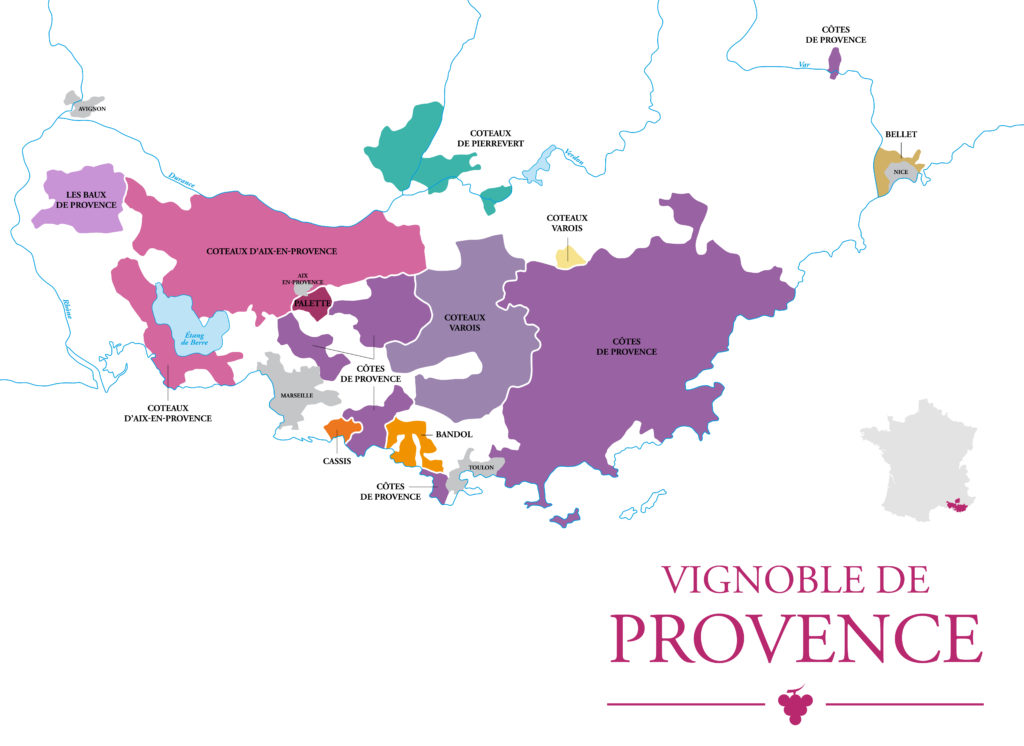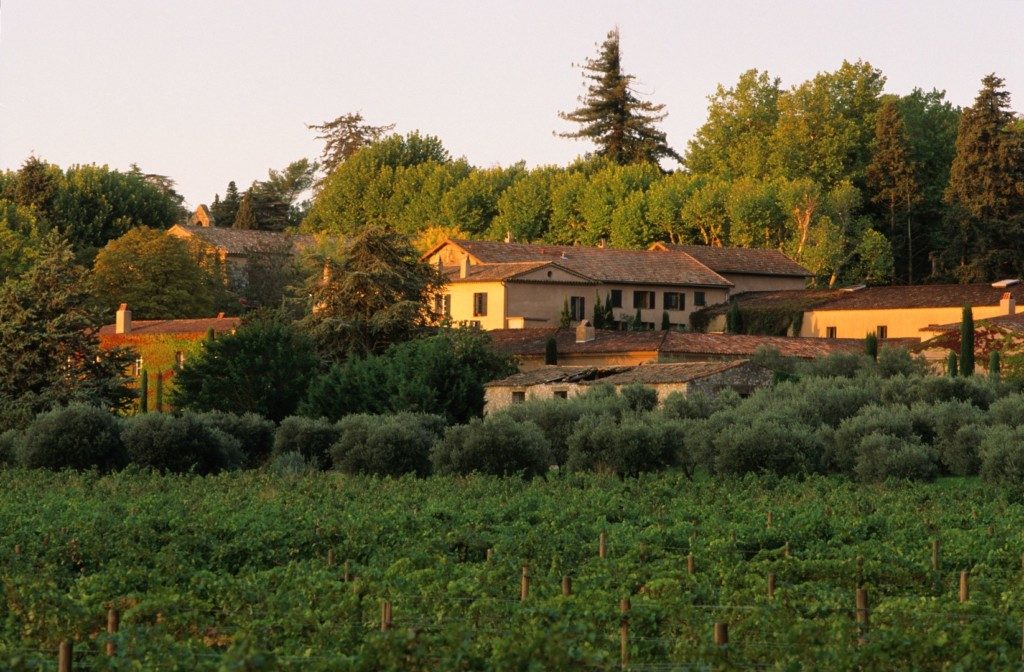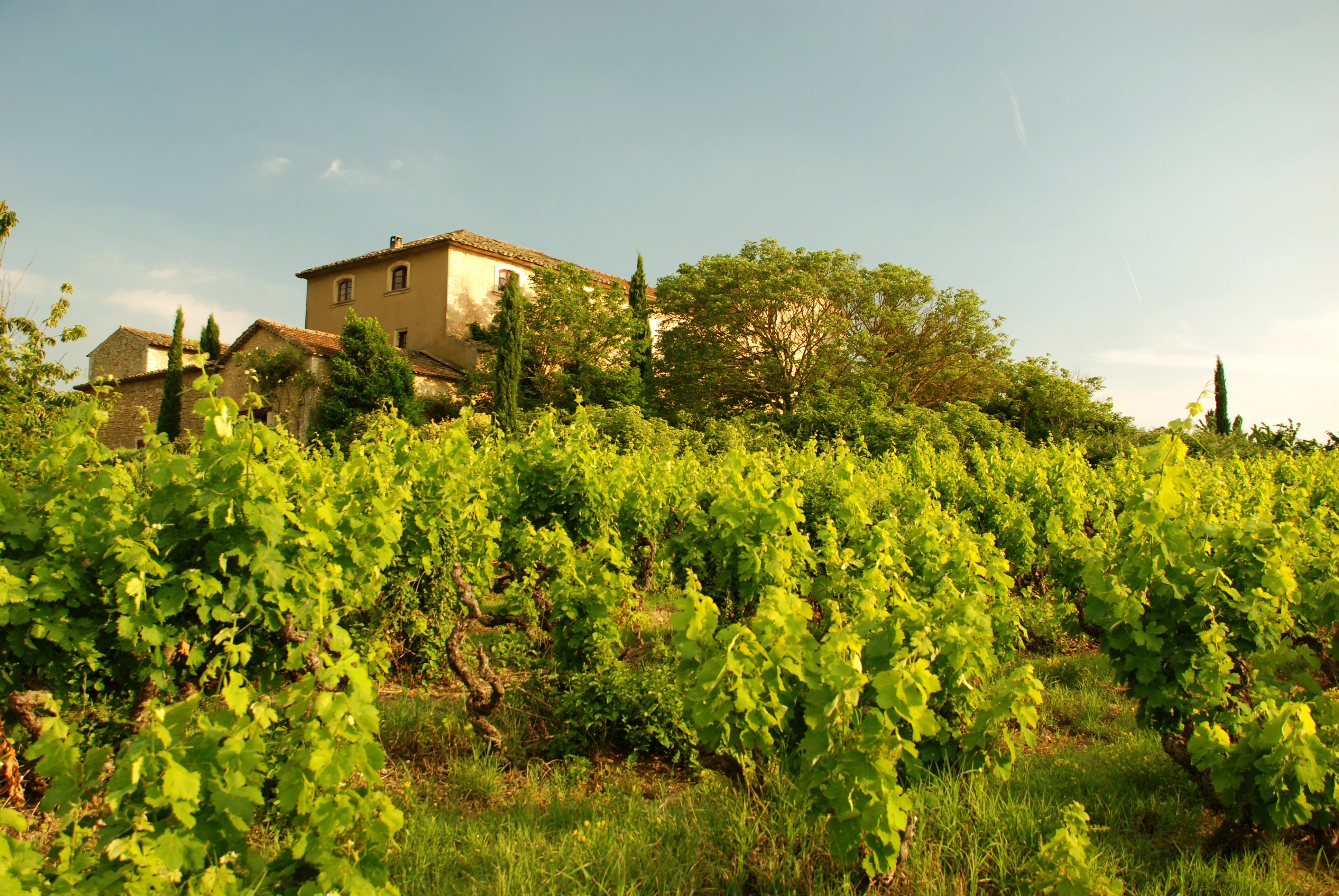Provence AOC (or Provençal wine) comes to us from the southeastern area of France along the Mediterranean Sea – an area with a winegrowing history dating back to the Greeks some 2,600 years ago.

While the region is known the world over for Rosé wines, whites and reds are also produced in this region under a few different classifications which make Provence one of the most underrated wine regions of France producing some of the most amazing wines. As with (almost) all French regions, the wines are labeled on locale, so…what is in the bottle?
Well, let’s take a stab at the grapes first. While there are a wide range of highly obscure and nearly extinct grapes in the region, the major players are:
- Grenache (red)
- Syrah (red)
- Mourvèdre (red)
- Carignan (red)
- Cinsault (red)
- Counoise (red)
- Tannat (red)
- Cabernet Sauvignon (red)
- Grenache Blanc (white)
- Marsanne (white)
- Roussanne (white)
- Clairette (white)
- Bourboulenc (white)
- Ugni Blanc (white)
- Rolle (white)
If you have been following this Understanding AOC series, you’ll notice a striking resemblance to the varieties of the Rhône Valley growths here – not much of a surprise as Provence is the eastern neighbor to the Rhône. That said, the resemblance is only on the surface level. Again, there are a number of odd, obscure, and long forgotten grapes in the region that are allowed and would make quite a long comprehensive list that we will skip here for now.

There are 9 regions in Provence that you will see designated on labels:
- Côtes de Provence: Almost 90% of the production of this region is the famous Provençal Rosé wines that we have all come to know and love. The majority are blends of Grenache, Syrah and Cinsault.
- Coteaux d’Aix en Provence: Another prized Rosé region in Provence, with the composition of the Rosés being the same as above with the addition of Counoise and Mourvèdre in the mix.
- Cassis: If you’ve ever worked behind a bar or are fans of the Kir or Kir Royale cocktails, you’ve probably heard of Crème de Cassis. That is not from here. That is from Burgundy (Dijon, yes, same place as the mustard – see France can get confusing, we almost got you though, didn’t we!?). This is actually the original AOC of Provence. Today, this is a primarily white wine growing region, focusing on Marsanne and Clairette that take on a coastal influence.
- Bandol: Mourvèdre is king here, as are reds, although Rosé has a place here and in the American market presence. Although white from this region are gaining acclaim, usually a blend of Clairette, Ugni Blanc, and Bourboulenc.
- Palette: Reds and Rosés of Mourvèdre also dominate here, but the obscure white and red grapes of note earlier in this post have a firm home here as well.
- Les Baux de Provence: This is a region dominated by red wine production, generally of Grenache, Syrah, and Cabernet Sauvignon.
- Bellet: Centered around Nice, France, and dedicated to the odd and obscure grapes of yore. We aren’t going to go much deeper than if you ever see a bottle labeled as Bellet, whether Rosé or white wine, just buy it and thank us later. Sadly, chances are slim you will find these in the greater American marketplace (sans internet hunting).
- Coteaux Varois de Provence: Rolle is the dominant white grape in this region for the white blend wines that are produced, but again, Rosé rules, made largely of a blend of Cinsault, Grenache, Mourvèdre, and Syrah
- Pierrevert: This is a new(er) and fun area of Provence. Rosés and reds are produced from Grenache, Syrah, and Cinsault. This is the only Provençal region that allows, and requires, at least half of a Rosé’s production be in the saignée method.

While the majority of the AOC classify on land areas (based on unique terroir), Provence is the only region other than Bordeaux that classifies houses. They are known as ‘Crus Classés’ and are distinguished by cellar reputation, history, winemaking, and vineyard quality. What is unique and interesting about the Crus in Provence is the fact that the house can buy new vineyards, even far away from the original house, and still label as Cru Classé, or they can make 2nd and 3rd labels, generally decreasing in quality, yet still label as Cru Classé. Another fun curveball from the AOC. Add the fact in that no new Crus Classés will ever be added, and the holders of the title will never lose it, even if their quality slips vintage after vintage. The 18 (very happy) designated houses are as follows:
- Château de Brégançon
- Clos Cibonne
- Château du Galoupet
- Domaine de Mauvanne
- Château Minuty
- Clos Mireille
- Rimauresq
- Château de Saint-Martin
- Château Sainte-Roseline
- Château de Selle
- Château Sainte-Marguerite
- Château Roubine
- Domaine de l’Aumérade
- Château de la Clapière
- Domaine de la Croix
- Château Saint-Maur
- Domaine du Noyer
- Domaine du Jas d’Esclans
Understanding AOC Series:

